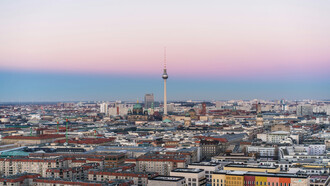The architectural design of a particular nation is considered a distinct form of heritage and identity. The uniqueness of architecture of any nation defines its distinct cultural behavior and particular mindset. It is often used by people in power to showcase their strength and wealth of their state. So the designs of the buildings present a particular epoch of the place. Similarly, change, destruction, or elimination of architectural elements is also related to shifts of power.
The architecture of Kashmir has been mostly influenced by the outside world. Due to its location, the architecture of the valley presents various syncretic elements, such as Buddhist, Hindu, Islamic, and colonial period. The usage of wood, bricks & stones as a building material has been utilised among these schools of architecture. These principal materials were indigenous to Kashmir, whereas other materials such as marble are alien to the region. So development of architecture revolved around these widely available materials.
In Ancient times, stones were primarily used for building the structures. Traces of these ancient structures can still be found in the region. During Ashoka Period, various temples were constructed, for example two Shiva temples at Bijbehara. Wood became popular during the medieval period with the arrival of Central Asian artists. Various buildings like khanqas, mosques and shrines were made up of wood. In the Mughal period, stone architecture was revived, in addition to that, new forms of materials were introduced, like red sandstone and marble.
The usage of timber in building structures in Kashmir has been going on since the Middle Ages. The shrines of the valley are testament to it. The origin of timber framing (in the valley), which is locally called Dhajji Dewari, is believed to be Central Asia. The vernacular timber framing of Kashmir resembles the Turkic way of timber framing. It features wooden logs in a crisscross pattern and is then filled up with bricks. It also resembles the European way of building, which also features these timber frames. In Kashmir there is another traditional method of timber framing, in which long wooden pieces are placed in a horizontal way, called Taq. Sometimes building features both Dhajji Dewari and Taq.
These timber-framed structures have survived for several centuries; they have faced various natural calamities such as earthquakes and floods. But whether they will survive the onslaught of modernity remains to be seen. The old quarter of Srinagar city is dotted with these timber framed structures. They feature various elements, representing the traditions of a bygone era. There are various structures, especially residential houses, which are different in terms of their facades and various other ornamentation. The houses that were heavily decorated usually belonged to people of wealth, especially Pandits (native Hindus of Kashmir). Their houses were much more decorated than their Muslim counterparts. These houses consisted of various kinds of pediments, roofing styles, distinct window designs, and, more famously, the overhanging balcony, locally called Dab.
Pandits of Kashmir were rich, so they could afford these complexities, but that doesn’t mean structures associated with Muslims were not beautiful. One of the biggest expectations is the shrines associated with spiritual saints of Kashmir. These sacrosanct structures can be considered the Baroque or even Rococo style of Kashmir, as they were aesthetically pleasing and featured detailed carvings. The exterior of these shrines featured pagoda-style roofing, windows featuring Pinjrakari (wood lattice), Moorish facades, and walls featuring sometimes full or partial usage of wood mixed with bricks. Coming to interiors, which feature paper maché and wood carvings featuring floral patterns, in addition to that, the ceiling of the structures sometimes features Khatamband (geometrical patterned woodwork).
So Kashmiri culture has a strong affinity with woodwork, but this tradition is slowly dying. Due to the wave of modernity, people of the valley had started to use cement, sand, and brick as a unit of basic building material. People no longer build timber-framed structures due to their high cost and maintenance. There is also this perception among the local populace that structures made up of wood and mud are associated with backwardness. While in Germany there are roads associated with these timber-framed structures, and they are considered tourist attractions. Unfortunately, people of Kashmir have miserably failed to promote their architecture as a tourist product. Instead of saving and protecting it, they are rather destroying and eliminating it.
The most shocking thing is that even local architects are not encouraging timber framing in the region. Even they themselves are aware of its benefits against any natural calamity such as earthquakes. Architects of the region lack that sense of creativity. They sell the designs that look more like the imitations of the West, which lack any touch with local culture or heritage.
In old times people of Kashmir used to decorate their buildings, but nowadays, due to its political environment, people started to restrict it to bare minimalism. This minimalistic wave has created an urban environment of coldness, harshness, and isolation. In comparison to the maximalist architecture of Kashmir, which featured more liveliness, ignited emotions, and a sense of creativity among the masses. Recently, under the smart city initiative, there were efforts to repair old timber-framed structures in the old city of Srinagar. But there were reports that buildings were just plastered with flat wooden logs instead of replacing the decaying the old decaying wood. In addition to that some buildings were made to appear as if they were timber framed. We need to encourage the revival of the timber framing method of Kashmir; otherwise, it will transform from architecture into an archeological thing.















